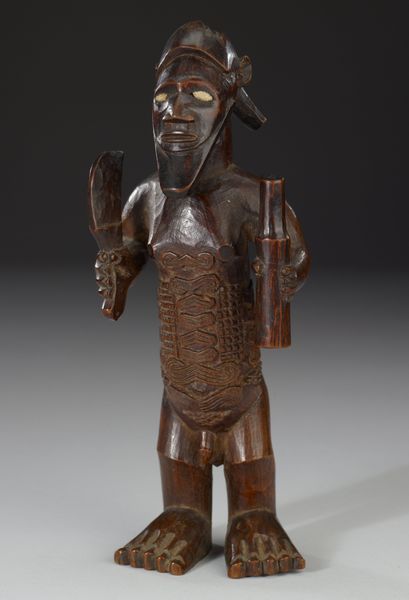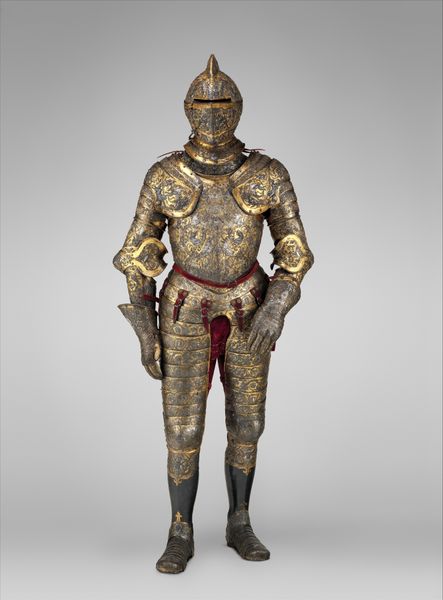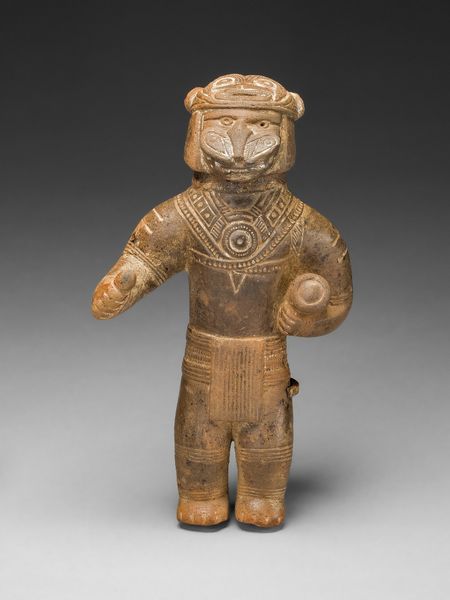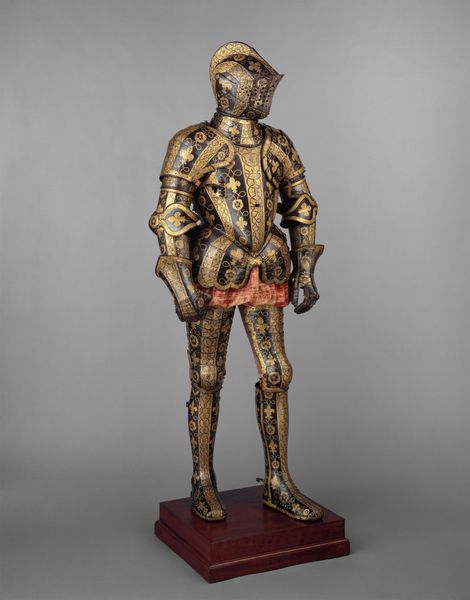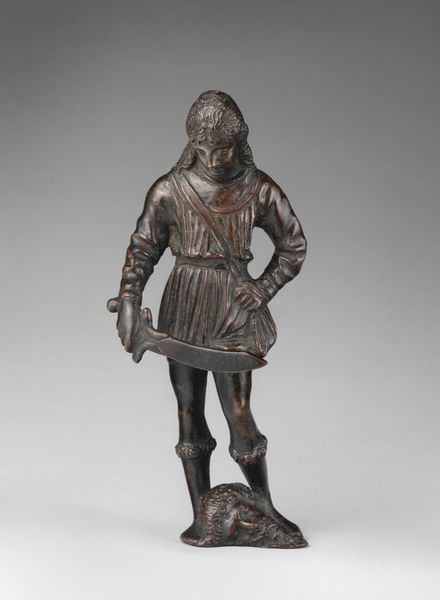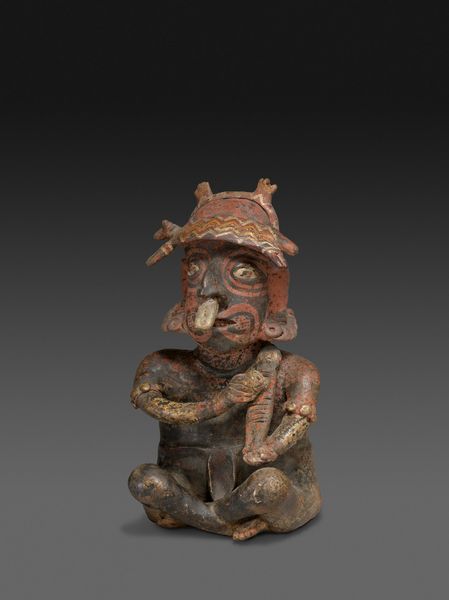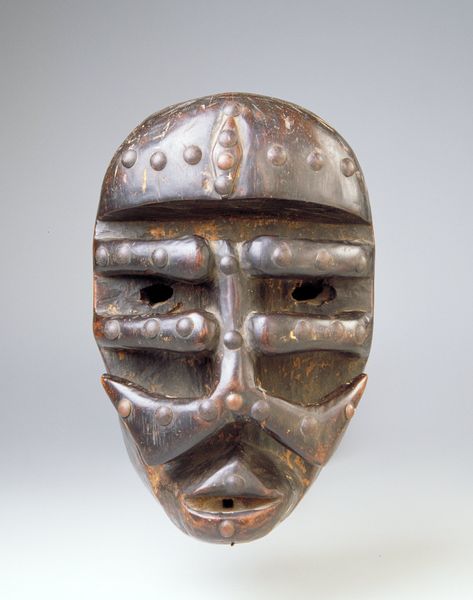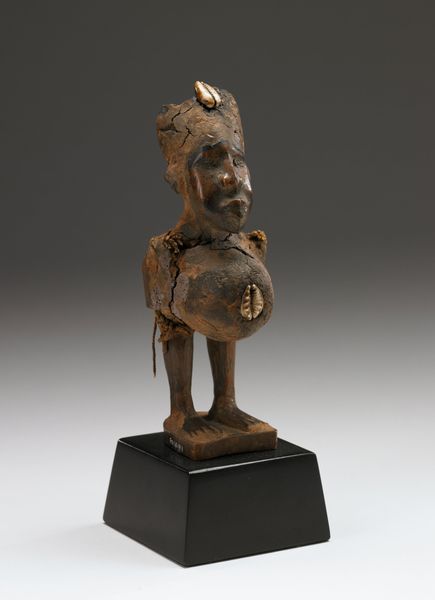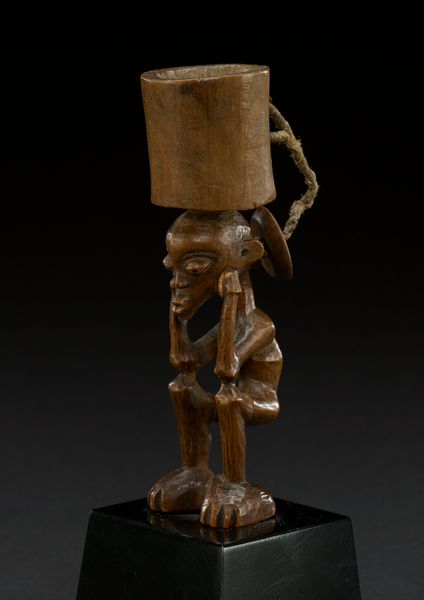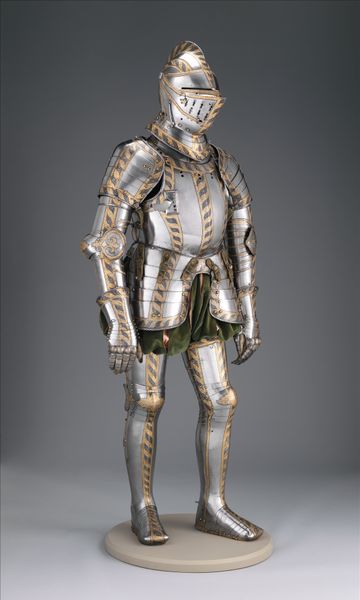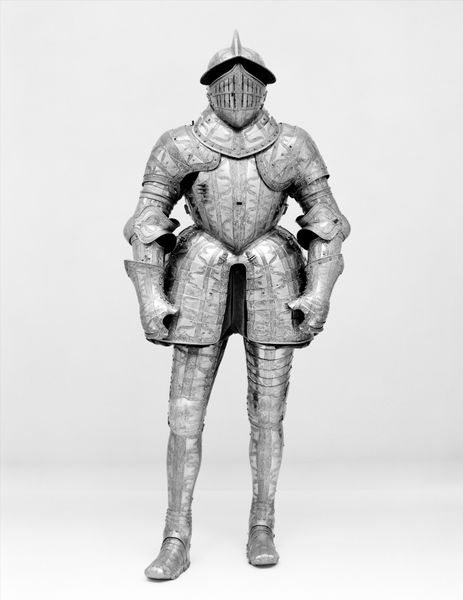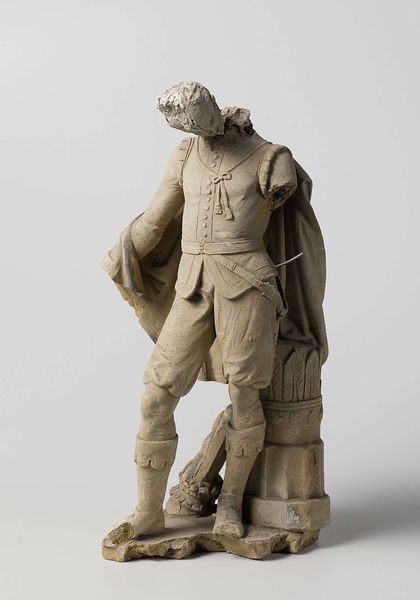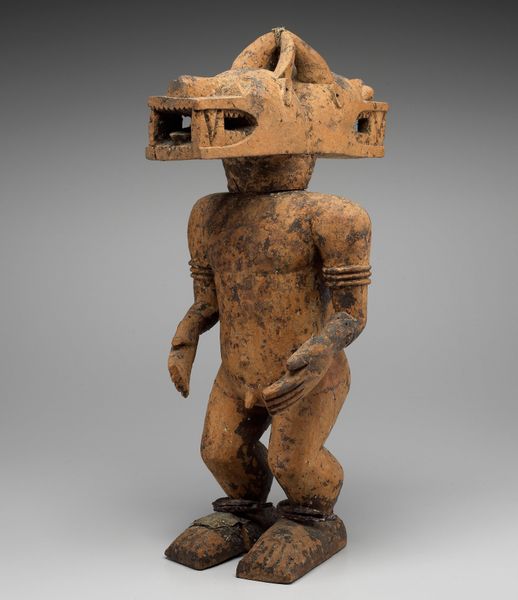
metal, bronze, sculpture
#
portrait
#
metal
#
sculpture
#
bronze
#
figuration
#
sculpture
#
yoruba-art
Dimensions: 11 3/4 x 7 5/16 x 4 5/8 in. (29.85 x 18.57 x 11.75 cm)
Copyright: Public Domain
Editor: This bronze sculpture, titled "Warrior Chief," dates back to around 1800 and is from Benin. There's an intensity to the figure; he looks formidable, and the intricate details in his regalia are striking. How do you interpret this work within its historical and cultural context? Curator: This sculpture compels us to consider the intersection of power, representation, and colonialism. The warrior chief, rendered in bronze—a material deeply associated with wealth and status—reflects the hierarchical structure of Benin society. Consider the context: 1800 places it squarely within the period of increasing European colonial ambitions in Africa. Editor: So, the sculpture could be viewed as more than just a portrait? Curator: Precisely. It becomes a powerful statement of Benin's strength and sovereignty, intentionally crafted in defiance of encroaching colonial forces. Note the details: the weaponry, the elaborate adornments – each element is carefully constructed to project an image of authority and control. But let's not romanticize it. Whose power are we celebrating, and at what cost? Who was excluded from the narrative encoded within the bronze? Editor: That's an important point. I was initially focused on the artistry and the obvious display of power, but now I see it speaks to resistance as well. Curator: Exactly! It encourages us to engage with the complex narratives embedded within its creation. By unpacking those layers, we can recognize art’s powerful role not only as an aesthetic object but also as a carrier of cultural identity. It invites critical engagement with power structures, both past and present. Editor: This sculpture has given me so much to think about! Thank you for revealing these nuances. Curator: My pleasure. It's crucial to always examine these works with an intersectional lens, continually asking who benefits, who is silenced, and what alternative perspectives exist.
Comments
minneapolisinstituteofart almost 2 years ago
⋮
This bronze figure represents a warrior chief, and would have been placed on a shrine to honor an Oba, or king, accompanied by a memorial head and tusk, bells, and other ceremonial items. The figure’s garments and accoutrements all make reference to his status as a warrior with royal associations. He holds a shield in one hand and a ceremonial spear in the other, and the series of small bells that hang from his garment are indications of his status within the warrior class. The leopard – represented in the leopard-tooth necklace and the leopard face decorating the front of the figure’s garment – was an important symbol of the Benin kingship because of its power and ferociousness. Like memorial heads, this figure also wears a large coral necklace, symbolizing the wealth and power of the Oba he served.
Join the conversation
Join millions of artists and users on Artera today and experience the ultimate creative platform.
